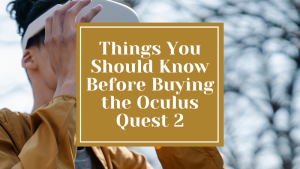You’ve heard talk or you’ve seen the clumps of mobile-device-porting individuals running around town. You’ve also heard that Pokémon GO has made its creators big money and even made Nintendo’s company value worth $12 billion more than it was two weeks ago.
Unless you’re running around trying to catch a rare, evolved Pokémon, you’re probably sick of it, wondering when these kids will grow up. Here’s the thing—they will grow up and while Pokémon GO won’t always be what it has been for its history-making launch, the Pokémon GO business and technology model makes for a shift in marketing that truly changes the game.
The whole thing can be summed up in a few words: local, geo, and social. And who of all companies would we expect to be at the heart of such a model? Well, Google of course.
LOCAL
In one weekend, Pokémon GO has accomplished something that Google has been trying to master for a very long time.
For years now, Google has been trying to stand up for the little guy—your local landscaping, auto repair, and pastry companies. More than anything, the folks at Google want a level playing field (and potentially to avoid being accused of over-featuring the largest companies in the world who hold much of the market’s power).
With all the SEO value that a nationwide company usually has—hundreds of pages of content, thousands of daily organic searches, and probably thousands, if not millions, of links let alone an insane ad spend budget—how could local businesses compete? How could your barber compete with Supercuts?
Google has made a bunch of search engine algorithm updates like Venice and Pigeon (no, not Pidgey) as well as a bunch of new local business products (Google Places, then Google+, then Google+ Local, now Google My Business) to help local businesses get noticed, yet Google has still struggled to sweep everyone off their feet.
One recent study showed that 31% of marketers are still confused or frustrated with Google’s local business tools. And with many frustrated about the company’s simplified ads tool, Adwords Express, and its (lack of) effect on small businesses, Google knows full well it has room to grow.
Inc.com reported, though, that with the launch of Pokémon GO, local businesses have seen insane increases in their foot traffic. And thus, with the “simple” launch of “just another mobile” game, local business marketing has truly changed forever.
Google may have just found its local business Purple Cow.
GEO
But it’s not all that simple or run-of-the-mill, is it? I mean, no new technology was invented necessarily—all the pieces were there already—but Google, Niantic, and Nintendo have been working on this for years and years.
The heart of its success is its geolocation and mapping technologies. Users run around finding Pokémon in the most “random” of places being guided entirely by Google Maps. With different types of Pokémon appearing in different locations, users are constantly moving around, visiting new places, and “checking in” to their Pokémon GO app all the while.
No, this is not the first time someone integrated geolocation into mobile apps, but it is one of the first to make a worldwide phenomenon of it—and maybe the first to effectively get loads of people off their seats and moving (although there are some other really funny apps out there that make you want to move).
The real innovation is actually something that hasn’t fully been rolled out yet: geospatial data marketing. Geospatial data is basically data that is tied to a location at any given time.
Picture a time in the not-so-distant future when you’ll be eating dinner near a shopping mall and a notification will pop up saying there’s a 30% storewide discount at the J.Crew store about 250 feet from where you’re eating. Or picture upon landing in Chicago and taking your phone off airplane mode, you get an ad welcoming you to Chicago and inviting you to try a nearby restaurant . . . after all, you did just land at 7 PM and you’re probably famished.
If our phones know where we are and at what time (and believe me, they already do), there will certainly come a time when geospatial data marketing will become the norm. Believe it or not, Pokémon GO has proved that with just the right incentives (in this case, the ability to capture virtual pocket monsters), people will gladly hand their data to large corporate entities without worrying too much about how that data is used.
SOCIAL
There’s one more thing this launch has proved and marketers everywhere should really be paying attention to this one—Pokémon GO has awoken legitimate social activity.
For the past decade, society has been hammered with new apps and technologies built to make it easier to virtually socialize with others around the globe. But very few have actually led to increased in-person, social interactions. Few have actually used technology to bring people to a location and let them speak face-to-face (of course, excluding dating apps like Tinder or Date Hatcher whose sole purpose is to bring people together on dates).
For the most part, games, social platforms, productivity apps, or even exercise apps haven’t actually brought people together and Pokémon GO has proved that “together” is where people want to be.
When Pokémon GO users go out, they meet with scores (sometimes hundreds depending on where you go) of people along their path and spend time talking about their different Pokémon, where they caught them, what level they are, and any other information about themselves they feel like sharing.
They go in groups of friends, sometimes purchasing extra phone charging adapters for their cars so they can all keep their phones alive all night. In our office alone, the majority of single people have caught Pokémon with a date and the majority of married people have gone out “catching” with their spouses.
Pokémon GO is creating experiences and getting people together. Any brand scratching their heads at this entire phenomenon should get thinking quickly as to how they could create similar social experiences for their customers.
THE RULES OF THE GAME
In conclusion, a lot is going on here. A ton of things are changing and if you’re not careful, you’ll miss what’s really going on here. Local businesses (and global businesses too, of course) are finding brand new ways to bring in more foot traffic; more and more people are giving away their geographical data in exchange for experiences; and people are looking to have true social interactions.
What’s next? Nike or Under Armour should launch (or add to their) fitness apps the ability for users to meet up and race or work together with product discounts as incentives for the winners. Safeway Grocery Store should start giving people added discounts if their nifty app shows that a customer has been shopping in their stores for over an hour. Starbucks should get with FitBit and remind customers who don’t get very much sleep that caffeine is how they’re going to get through the day.
The possibilities are endless—so start playing or you’ll be left behind.
Much success,



